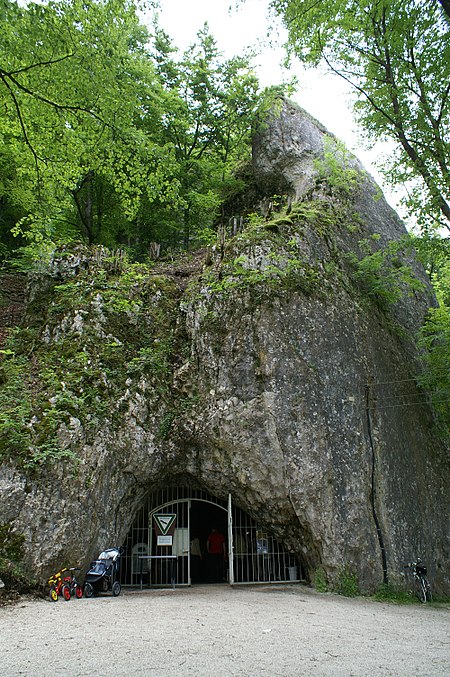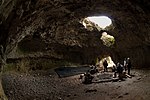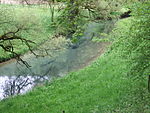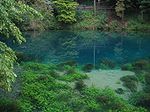Hohle Fels
Caves of GermanyLandforms of Baden-WürttembergPages with German IPAPrehistoric sites in GermanyShow caves in Germany ... and 2 more
Tourist attractions in Baden-WürttembergUpper Paleolithic sites

The Hohle Fels (German pronunciation: [ˈhoːləˈfɛls]; also Hohlefels, Hohler Fels, German for "hollow rock") is a cave in the Swabian Jura of Germany that has yielded a number of important archaeological finds dating from the Upper Paleolithic. Artifacts found in the cave represent some of the earliest examples of prehistoric art and musical instruments ever discovered. The cave is just outside the town of Schelklingen in the state of Baden-Württemberg, near Ulm. Because of the outstanding archeological finds and their cultural significance, in 2017 the site became part of the UNESCO World Heritage Site Caves and Ice Age Art in the Swabian Jura.
Excerpt from the Wikipedia article Hohle Fels (License: CC BY-SA 3.0, Authors, Images).Hohle Fels
B 492, Gemeindeverwaltungsverband Blaubeuren
Geographical coordinates (GPS) Address Nearby Places Show on map
Geographical coordinates (GPS)
| Latitude | Longitude |
|---|---|
| N 48.379166666667 ° | E 9.7555555555556 ° |
Address
B 492
89601 Gemeindeverwaltungsverband Blaubeuren
Baden-Württemberg, Germany
Open on Google Maps










